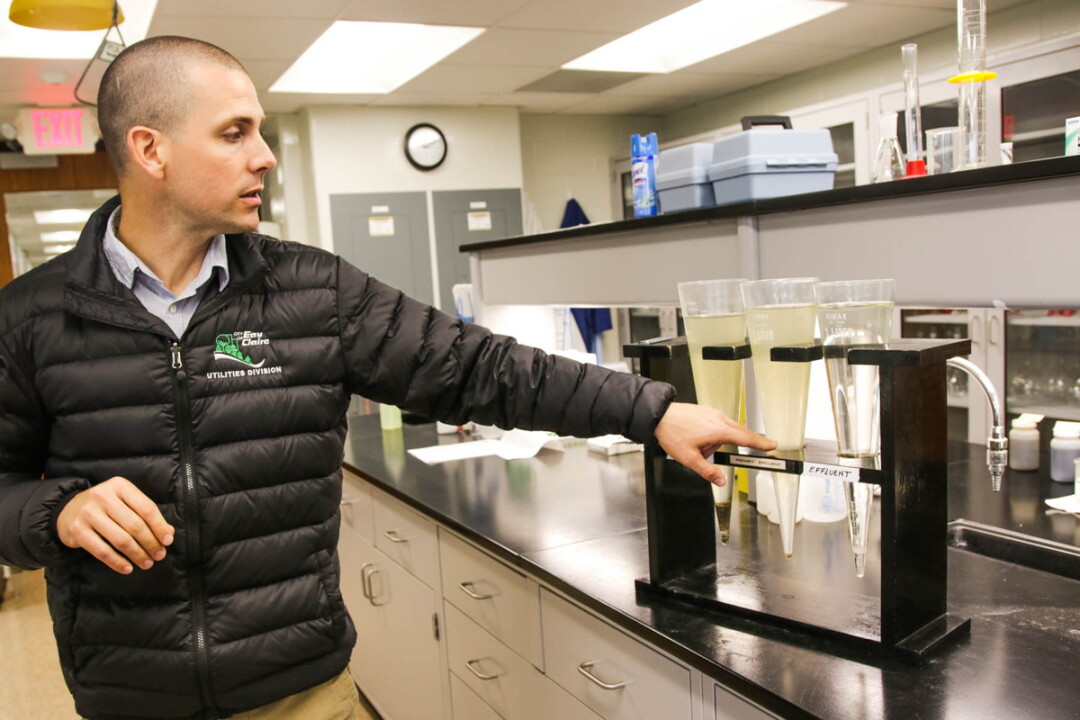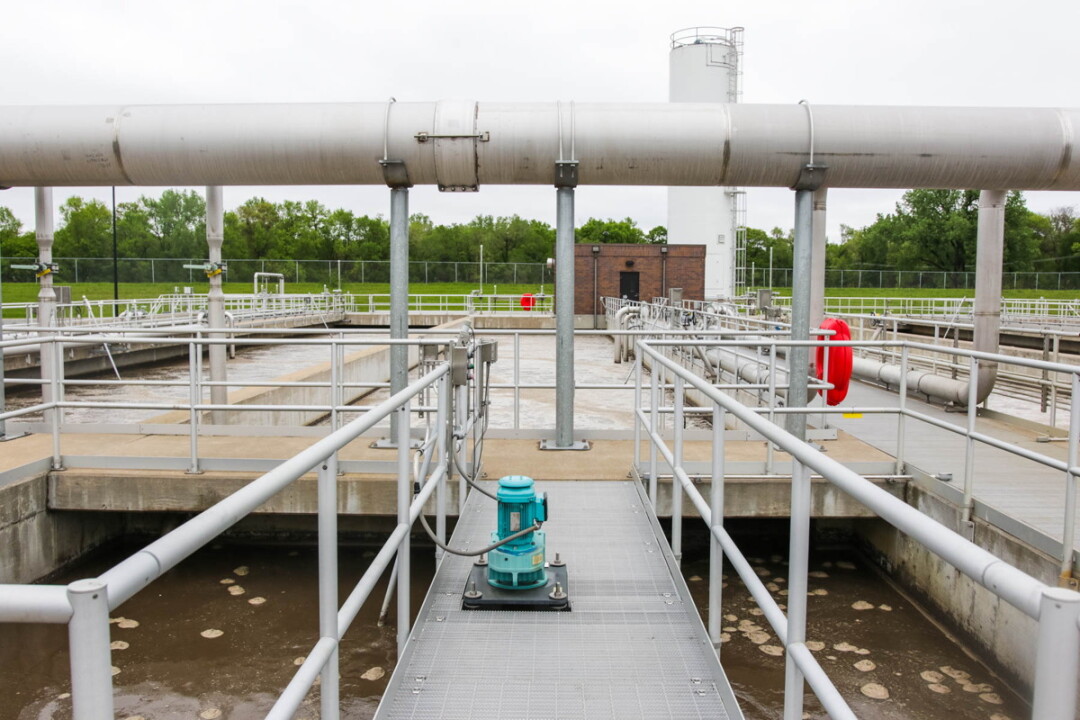Waste Not, Want Not?
a deep dive into the wonderful, wacky world of organic waste disposal
Katie Venit, photos by Andrea Paulseth

My husband paused halfway between the trashcan and kitchen sink, clutching an apple core. “Tell me again what I do with this?”
“Compost.” I pointed to the green compost bin, courtesy of our new trash haulers, Earthbound Environmental Solutions.
He paused. “Why is that better than the garbage disposal?”
“Climate change.”
He paused. He pauses a lot, which I take to mean he is thinking furiously. “Why?”
Now it was my turn to pause. I didn’t know.
“I don’t know,” I said, adopting a steely gaze and donning my super researcher cape. Had I reading glasses, I would have equipped them dramatically. He rolled his eyes, which I took to mean he was cheering internally like a kid at the space shuttle launch. “But I’m going to find out.”
This Epic Journey of Discovery led me to places I never thought to visit (e.g., the wastewater treatment plant) and questions I never thought to Google (e.g., why are farts flammable?) as I investigated the three most common options for apple core disposal in Eau Claire: landfill, garbage disposal, and compost.

OPTION 1: TRASH IT
The first option to dispose of that apple core is to stick it in the trash. For Eau Claire, where I live, that means it would end up at Seven Mile Creek Landfill.
According to the U.S. Environmental Protection Agency, organic materials (waste containing carbon and made from formerly living things such as food, paper, lawn scraps, and leaf bags) make up the majority of municipal solid waste.
Once in the landfill, organic waste decomposes quickly at first thanks to aerobic bacteria – bacteria that need oxygen. These bacteria take in carbon from organic waste and oxygen and release carbon dioxide. However, as garbage is piled on garbage, oxygen runs out and decomposition slows. After a few weeks or months, the aerobic bacteria die and anaerobic bacteria move in like teenagers at a house party when parents leave town. Also like teenagers, anaerobic bacteria mostly produce methane, which will be emitted from the landfill for 50 years or more as they slowly eat through pizza and chips.
Both methane and carbon dioxide are greenhouse gases that trap heat, but methane is about 30 times more potent. According to the EPA, gas emitted from landfills are the third-largest human-caused source of methane emissions in the United States (natural gas and petroleum production, and agriculture are the first and second largest sources). Project Drawdown, a nonprofit organization that ranks ways to combat climate change based on effectiveness and cost, holds landfills accountable for 12 percent of the methane emitted worldwide.
Modern landfills like Seven Mile Creek mitigate that impact by collecting and burning methane to generate electricity. The idea isn’t new. Ancient Assyrians burned methane to heat their baths in the 10th century B.C.E. In the Victorian era, methane from city sewers powered street lights in Exeter, England. (Anyone who’s ever lit a match after a trip to the loo knows how flammable that stuff is – it would be a shame to waste it.)
hen a landfill cell is filled and closed off, pipes are buried in the cell to collect gas and zoom it to a treatment facility to remove moisture, impurities, and other gases. Then they flare the methane to generate electricity to power operations at the landfill, evaporate leachate (“leachate” is fluid collected from the landfill and my favorite new word), and even provide power back to the grid.
Project Drawdown ranks collecting methane from landfills as number 58 in its list of solutions because landfills create so much methane and it can replace fossil fuels. However, it’s not a perfect system. Even the most state-of-the-art landfill cannot nab all the methane released; based on 2016 data submitted to the state Department of Natural Resources, Seven Mile collected somewhere between 45 and 80 percent of the methane generated.
It’s better than nothing, but that apple core could do better.

OPTION 2: FLUSH IT
My husband already knew throwing the apple core in the garbage wasn’t the best idea. What he was really asking was why composting the apple core is better than putting it down the garbage disposal. That’s where my Epic Journey of Discovery took me next.
“We’re taking a problem that has to be dealt with – the wastewater – and we’re using it to improve the river. ... Everyone here works really hard to improve the environment.” – Ty Fadness, Chemist, City of Eau Claire
In most municipalities, household drains empty into the same outgoing sewer pipes; water from sinks, toilets, and showers all travel together to the wastewater plant. So if my husband had put the core down the garbage disposal, it would have mingled with poop, toilet paper, and microbeads from facial scrubs in the pipes. From there, cities handle the organic waste differently. Let’s focus on Eau Claire.
Every day, Eau Claire’s wastewater treatment plant processes 7-8 million gallons of wastewater. Machinery removes rags, sand, and other inorganic trash from the wastewater, which goes to the landfill. As for organic waste, many cities either landfill or incinerate it, but Eau Claire turns it into energy.
Organic waste goes to a tank where it settles into three layers: grease on the top, organic waste on the bottom, and very murky water in the middle. The grease is vacuumed off and landfilled. The water, which still has suspended waste particles and a lot of phosphorous and nitrogen dissolved in it, is sent back and forth through a series of “selector zones” (big, open-air tanks that are linked together) that activate bacteria to pull these elements out of the water.
One of the selector tanks that churns with brown frothy bubbles supersaturates the water with oxygen to put bacteria in hyperdrive. Ty Fadness, city chemist, said under natural conditions, it would take 30 days for bacteria to break down organic material, but because the water is so aerated, it only takes 12 hours.
“There are so many concentrated solids in the aeration tanks that if a person fell in, they would float,” he said. “It’s the same density as the Dead Sea.”
As they feed, bacteria pull carbon, phosphorus, and nitrogen from the water and store them as solids by using them to make more bacteria that clump together as they grow. Those clumps settle at the bottom with the rest of the solid waste. This layer, called sludge (official term), is sucked out to be thickened and digested.
Up until now, only a little greenhouse gas has been released because carbon has been captured by the bacteria rather than turned into carbon dioxide. However, now the sludge is sent to giant, million-gallon anaerobic digester tanks that look like squat silos. These tanks are heated to 95 degrees Fahrenheit for a few weeks as anaerobic bacteria break down the last of the waste. All that activity produces a lot of methane, but the tanks are covered so gas can’t escape. It’s collected and burned to power the plant and heat the digesters.
Using large methane digesters like these to generate electricity sit at number 30 on Project Drawdown’s ranked list. Humans are the ultimate renewable resource; as long as we use toilets and put apple cores down the disposal, we’re going to have to deal with the end product. Might as well make it work for us.
That’s not the end of the line for the sludge. Every year, the city donates 9 million gallons of the stuff to a pool of 25 local farmers. It’s a potent fertilizer with concentrated amounts of phosphorus and nitrogen.
“It’s a good trade-off for us,” said Lane Berg, Eau Claire’s utilities manager. “We produce sludge and we have to get rid of it, and farmers provide us with that opportunity. It works out well for all of us.”
“There are so many great resources here,” Fadness said. “We want to make sure we put them back in the system and reuse them.”
As for the water that was separated from the solids, it’s filtered, bleached, then cleaned of the bleach, and pumped to the Chippewa River.
The treatment plant tests the water to make sure it’s safe. In one test, they take a bucket with processed water from the plant and another with river water and put minnows in each. Guess which bucket the minnows do better in. (Hint: It’s the water that used to have your poop in it).
“We’re actually improving the river water when we discharge into it,” Fadness said. “We work really hard towards our mission, which is to preserve all life around the Chippewa River for the natural wildlife and people in the Chippewa Valley and downstream.”
“We’re taking a problem that has to be dealt with – the wastewater – and we’re using it to improve the river,” Fadness said. “We’re taking the biosolids and creating a powerful fertilizer. Everyone here works really hard to improve the environment.”

OPTION 3: COMPOST IT
Which brings us to the third option, the newfangled method that was befuddling my husband and me as we struggled to figure out what to put in our new green composting bin.
Composting, or using decaying organic matter to improve soil, has been around for thousands of years. It fell out of favor when artificial fertilizers were developed in the 20th century because buying fertilizer seemed easier than making it from scratch. And it is. To be honest, I don’t have it in me to be a backyard composter. Nope, if my family is going to compost, we’re going to do it the lazy, First World way: pay someone else to do it for us. That someone else is Earthbound Environmental Solutions. They pick up bagged organic waste in separate compostable bags, along with trash and recyclables. We put it all out for weekly curbside pickup. (You can also hire them to just pick up your compostables.)
Zacharious Pappas, owner of Earthbound, says it’s great that Seven Mile Creek Landfill generates electricity from the methane it collects but that methane is basically a product of laziness. “Food shouldn’t be going into the landfill,” he said. “Organic waste shouldn’t be going into the landfill.”
Project Drawdown ranks composting at number 60 on its list. Why? It goes back to bacteria. In the aerobic environment of a compost pile, bacteria make carbon dioxide, not methane.
But wait, you say, isn’t carbon dioxide also a greenhouse gas? That’s the one always on the news! Yes, but carbon dioxide produced through decomposition is a natural part of the carbon cycle. Plants absorb carbon dioxide from the air and use the carbon to grow. When they, or the animals that ate them, decompose in an aerobic environment, that carbon hooks up with oxygen and is released back into the atmosphere where it started. Aerobic decomposition is a net-zero operation.
The problem with the anaerobic decomposition of a landfill is that rather than sending that carbon back into the air as carbon dioxide, which plants will absorb and start the process over again, it produces an unnatural amount of methane, which plants can’t do anything with, and, as mentioned above, methane is a much more powerful greenhouse gas.
The key ingredient for aerobic decomposition is, of course, air. Earthbound adds a bulking agent to promote airflow and blows fans through the pile. They also use a compost calculator to identify what type of material is going into the composter: green or brown waste, food scraps or leaf litter, nitrogen or carbon. The calculator creates a recipe to ensure the compost pile stays hot enough – 150 degrees F, even in winter – to support the aerobic bacteria. In summer, they water the pile to maintain 50 percent moisture.
“We don’t just have food sitting around and decomposing,” Pappas said. “We promote microbial activity, so it’s actually microbes composting the material faster than it would if it were just sitting around. The bugs are working through the material at a faster pace, and the food just isn’t sitting there long enough to create methane.”
On top of that, much of the carbon is sequestered in the compost; it isn’t all emitted as carbon dioxide. The result is a potent natural fertilizer and a lower carbon footprint.
I reported my findings to my husband.
“Huh,” he said, which I took to mean, “This is very interesting; you should probably win a Pulitzer, hint hint, editors of Volume One.”
As for me, I no longer view organic waste as trash. Now I see it as a tool that has the potential to help or hurt the climate. I’ll keep composting with Earthbound and will make an extra effort to put tissues and paper towels in the compost bin to keep as much organic material out of the landfill as possible. But I’ll also stop giving my husband dirty looks for plunking an apple core down the garbage disposal.
The best thing we’re going to do is reduce our food waste – buying more intentionally so less of what we do buy goes bad. Project Drawdown ranks reducing food waste at number 3 on its list for combating climate change. In high-income countries, over a third of the food grown is never eaten. Being more intentional about food production and consumption is better for our pocketbooks, it will reduce emissions in the growing and decomposition processes, and my husband will have fewer vegetables taking up valuable cheese space in the fridge. Win. Win. Win.


